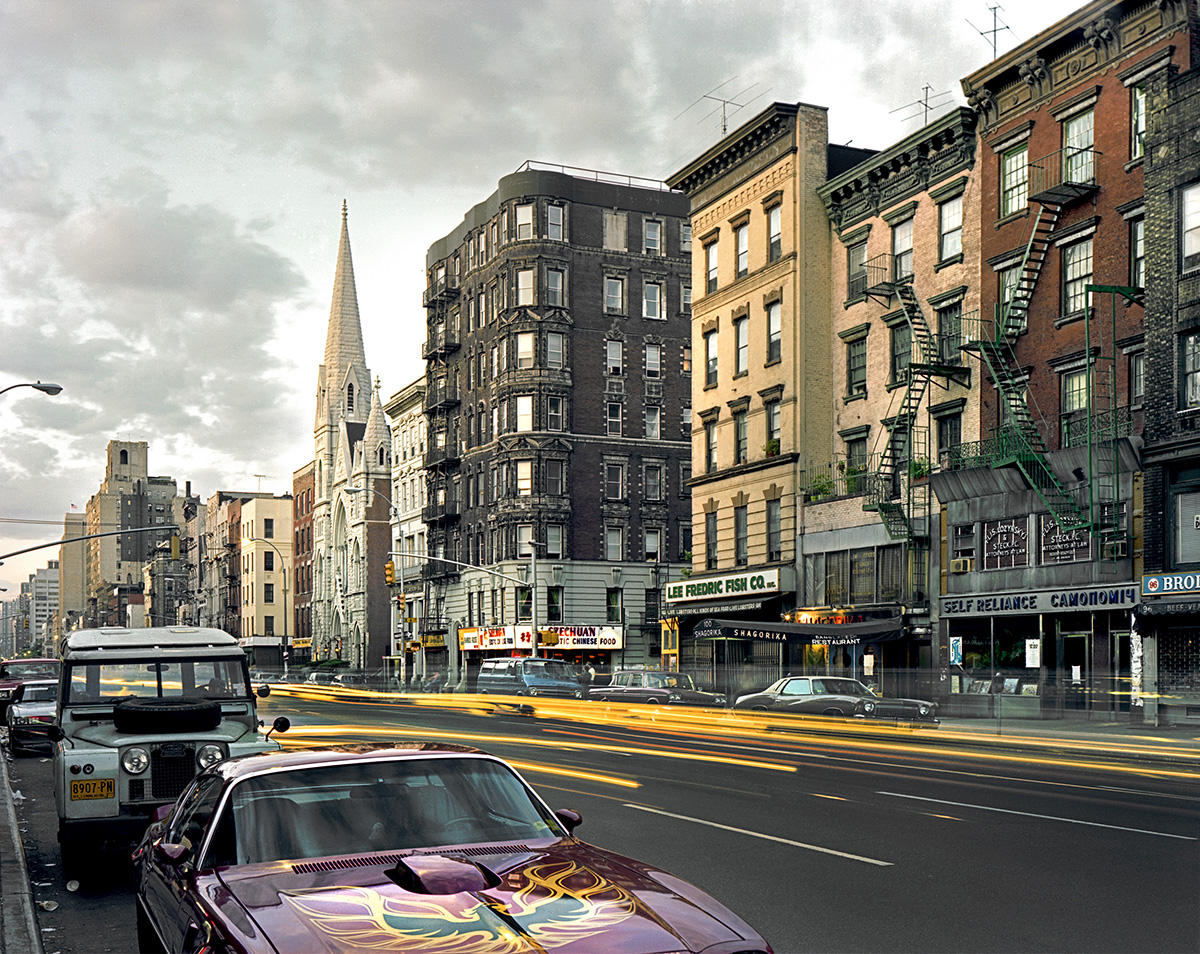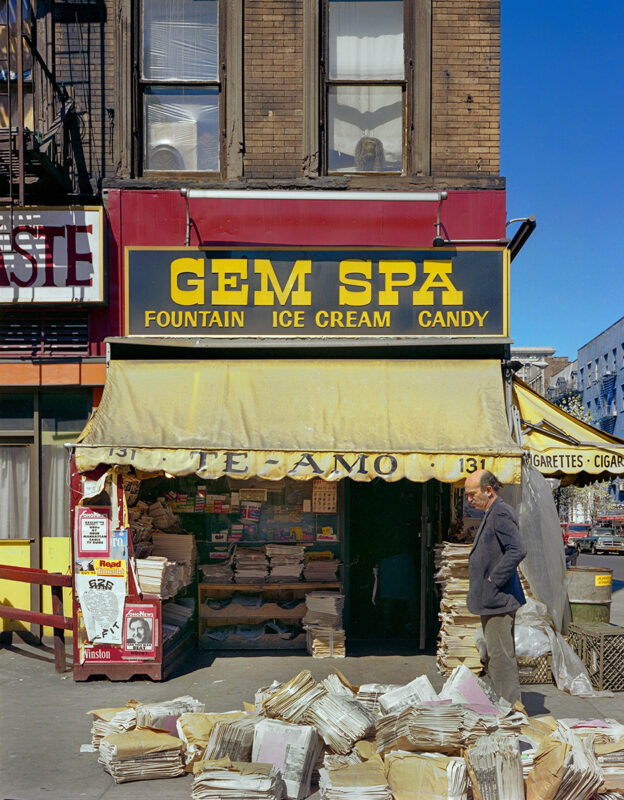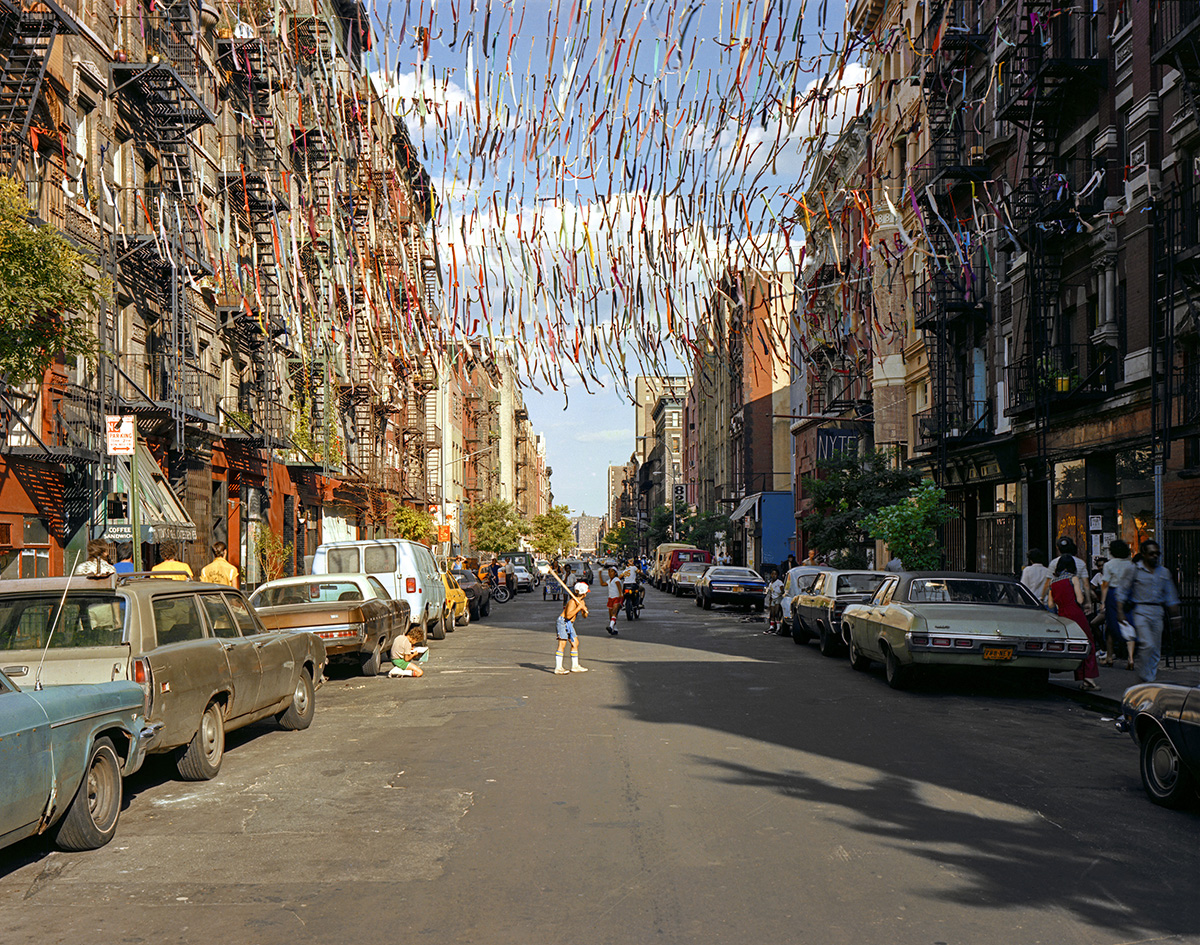In the late 70s I lived in a tiny tenement apartment on East 4th Street between the Bowery and Second Avenue, with a toilet in the hall and a bathtub in the kitchen. While in art school at nearby Cooper Union, my bedroom doubled as a darkroom for black and white printing, and the living room walls were covered with paintings and photographs. Living in the East Village, I quickly found a community of artists and songwriters. While CBGB, the punk rock Valhalla, was just around the corner, I was hanging with musicians who favored acoustic guitars. When a group of us began recording the Fast Folk Musical Magazine, a monthly album of songs with a printed insert, the typing and paste-up were done in my apartment. The typewriter we used was an IBM Selectric, a brilliant machine with interchangeable type balls. We borrowed it from Sherwood Ross, one of our songwriting buddies, who always seemed a bit goofy to me – he had a song called “I Sliced Pastrami for the CIA and found God” – but unknown to us at the time, he was, in fact, the Sherwood Ross, a legendary journalist and civil rights hero. He served as publicist for James Meredith, who was shot while leading a march for voting rights in Mississippi.

Wikipedia:
James, he’s got a gun!” Ross was quoted as saying in his eye-witness account of the shooting that was published on the front page of the Washington Star and other major newspapers. Photos of Meredith writhing in agony appeared in newspapers around the world. One such photo by the Associated Press garnered the Pulitzer Prize in 1967. These images – along with Ross’ appearance the following day on NBC’s “Today Show” calling for reinforcements – prompted Rev. Dr. Martin Luther King, Stokely Carmichael, and other civil rights leaders to rally to Mississippi to continue in Meredith’s footsteps.
Given all the creative ventures vying for space in my cozy apartment on 4th Street, I did very little cooking, and I spent a great deal of time in nearby restaurants and cafes reading a newspaper, jotting down lyrics or writing letters, keeping a journal. It was an analog world then, of course, and to me, the center of that pre-digital world rotated around Gem Spa, a newsstand at the corner of Second Avenue and St. Mark’s Place. Gem Spa always had the late edition of the Times, and near the cash register, an array of pricey art and architecture magazines, which I furtively leafed through, hoping to avoid the gaze of the cashier who would bark, “This is not a library!” should one linger too long on an open page. Gem Spa also was known for its chocolate egg cream, an elixir frothed up in actual glasses in a ritual transubstantiation of Fox’s U-Bet syrup, milk, and seltzer. You drank it right there – inside, amidst the magazines – or outside, where your egg cream was handed to you through a hole-in-the-wall window at the front of the shop.

In 1977, when I first moved to East 4th Street, my eating-out options were somewhat limited. There were cheap Indian restaurants on 6th Street, Bamboo House for Chinese on 7th, and the B&H Dairy between 7th and St. Mark’s. Dave, who worked behind the counter at B&H made the best omelets in the world, as far as I was concerned, but he was one cantankerous old dude. One day while seated at the counter, I failed to order fast enough for Dave, and he grabbed me by both ears and growled, “I can’t hear you!” Another day, I made the unfortunate choice of ordering a Coke to go with my bowl of mushroom barley soup. Dave shamed me in front of the entire restaurant – “Who orders a Coke with soup?” No one came to my defense. They all kept their heads down to avoid the wrath of Dave, the East Village version of Seinfeld’s Soup Nazi.
My restaurant options greatly improved when Kiev opened in 1978, a round-the-clock Ukrainian diner with pierogis, kielbasa, challah bread French toast, and unlimited lousy coffee. It teamed up with nearby Veselka as twin meccas of Ukrainian soul food. Kiev was an immediate hit with the entire neighborhood, and it bustled at all hours. It was blindingly bright, with banks of fluorescent tubes casting an unflattering greenish glow on the pale denizens of the East Village night. I sat at a table next to the Ramones one night at 4 A.M. looking so much like themselves in torn jeans, leather jackets, and long shaggy hair that I couldn’t help but think they were the Ramones dressed up to look like the Ramones. One night I sat across from John Malkovich, who I greatly admired as an actor, but rather than talking about the theater, he was blathering on to a companion about a house he had visited in the Hamptons. Oh well, I thought, we’re definitely not in the Hamptons here.
Closest to me on the corner of East 5th and Second Avenue was Binibon, a cheap hole-in-the-wall cafe with a bohemian vibe and edible food. The waiters and waitresses were young aspiring actors and artists like me, and it was a great place to sip coffee and read the paper. I was in there at least several times a week. They say that everyone from William Burroughs to Jean-Michel Basquiat ate there, but I don’t remember ever seeing anyone I recognized.
One morning, I arrived at my usual 8-ish hour, and while the place was clearly open, there were unusually few patrons. Something was wrong. Something terribly wrong. It’s been so long since then that I can’t quite describe the atmosphere, but after a brief bite to eat, I knew I had to get out of there right away. Someone behind the counter said something about a murder, that someone had been stabbed in the street outside, but there were no uniformed police in evidence – no NYPD detectives in cheap suits – and no crime scene tape or chalked outline of a body. It was, so it seemed, just another routine murder on the Lower East Side. That evening I watched the CBS News, and Dan Rather, who had just taken over for the legendary anchor Walter Cronkite, to my astonishment, reported the details of what turned out to be a decidedly un-routine murder on the Lower East Side.
Jack Abbott, a convicted violent felon, was paroled from a maximum security prison in Utah with the help of author Norman Mailer. Abbott’s prison memoir “In the Belly of the Beast,” had come to Mailer’s attention, and he believed that Abbott, a victim of a traumatic upbringing, deserved a chance at redemption. Abbott’s book was published, and after he was released, he came to New York to work as a researcher for Mailer and stayed at a halfway house on East 3rd Street run by the Salvation Army. At that time, East 3rd also housed a large shelter for the homeless, and the sidewalks were littered with derelict men. Abbot, after years of prison life, was now the toast of the town, giving interviews and doing television appearances while simultaneously living amongst the dregs of society just off the Bowery.
The New York Times:
At 5 A.M. on July 18, Mr. Abbott was eating in the all-night Binibon Restaurant at Second Avenue and East Fifth Street, three blocks from the halfway house. When a 22-year-old part-time waiter refused him permission to use a toilet, saying it was restricted to employees, Mr. Abbott apparently asked him to step outside. Within a minute the waiter, who had recently married and had a promising career as an actor, was dead of a single knife wound to the heart, and Mr. Abbott had fled.
I, unwittingly, had arrived at Binibon that morning just a few hours after the murder walking into a palpable maelstrom of horror. It was too late for the Times to retract their review of Abbott’s newly published book already in print for the Sunday Edition. “His prose is most penetrating, most knife-like, when anger is its occasion. How, I wonder, shall this talent serve Abbott now that he is free?” Binibon was shuttered shortly after the murder. Abbott was apprehended in Louisiana, convicted of manslaughter, and hanged himself in prison in 2002.
November 9, 1980. I stumbled out around 8 A.M. as usual and headed to Gem Spa for the paper. As I approached the newsstand, I was staggered on my feet by a screaming New York Post headline: “John Lennon Shot Dead.” The Times confirmed the murder in the less emphatic style of the Gray Lady with a headline down the page to the left above a photograph of Yoko Ono and music mogul David Geffen, distraught. The lead headline at the top of the page warned of a possible Soviet invasion of Poland. My God! Some things never change. Four decades later, I am still traumatized by that moment and the loss of one of my heroes – I had just seen John and Yoko walking through Central Park that summer.
Living in New York, one inevitably catches glimpses of celebrities – artists, actors, musicians – as a matter of course. They are neighbors, not just mythic icons of popular culture. Walking up Fifth Avenue years ago I collided rather violently with the late senator Patrick Moynihan, who had just emerged unexpectedly from a cab at the curb. Dusting ourselves off, we made brief eye contact, quickly assessing that nothing untoward had happened. It was just a random crossing of paths, literally. In New York, the nexus of accident and fate is an ever present reality, tightly woven like the grid of the streets.

My next-door neighbor, Manny, in 69 East 4th Street was getting weirder and weirder, wearing dark glasses day and night, and a steady stream of visitors came up the tenement stairs and knocked on his door, just inches from mine. Sometimes there were loud voices and heated arguments, but whenever I ran into Manny in the hall, he was friendly, relaxed and casual, if a little distant. I was suspicious of what he was doing, but I didn’t give it that much thought. One night there were, again, loud voices, followed by the sound of a struggle, furniture crashing, shouts of no! no! no! And then pop – pop – pop. Gunfire, three times. I heard footsteps fleeing down the stairs and the click of the deadbolt lock from inside my neighbor’s door. I called 911.
The police arrived a short time later, randomly buzzing apartments from the vestibule downstairs to get access to the building. After several minutes of silence, I cracked open my door and peered out. The cops were creeping forward in the narrow hallway, their guns drawn, barrels pointed in my direction. They hissed at me to get back inside. I pointed to my neighbor’s door and said “I think he’s still in there.” The door was locked from the inside, and the cops had to break it down. The EMS carried him down on a stretcher, blood pouring out of wounds in his torso. It appeared he was still alive. Weeks went by and the apartment remained empty, and Manny, well, he never came back.